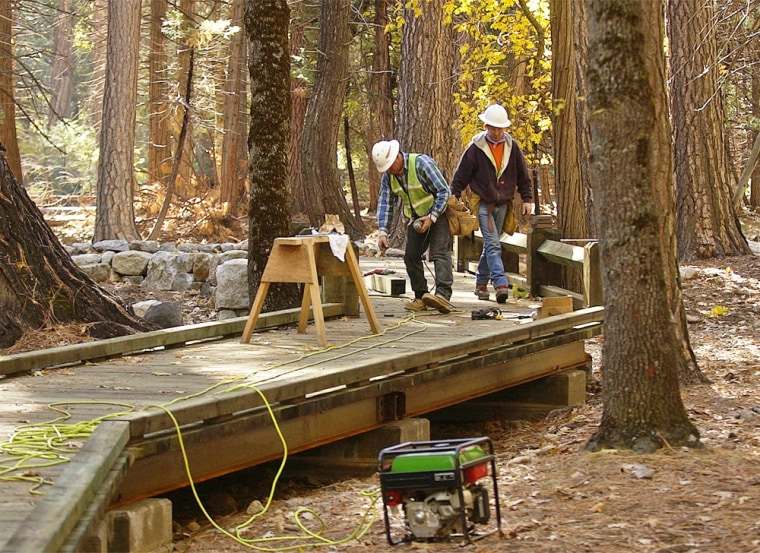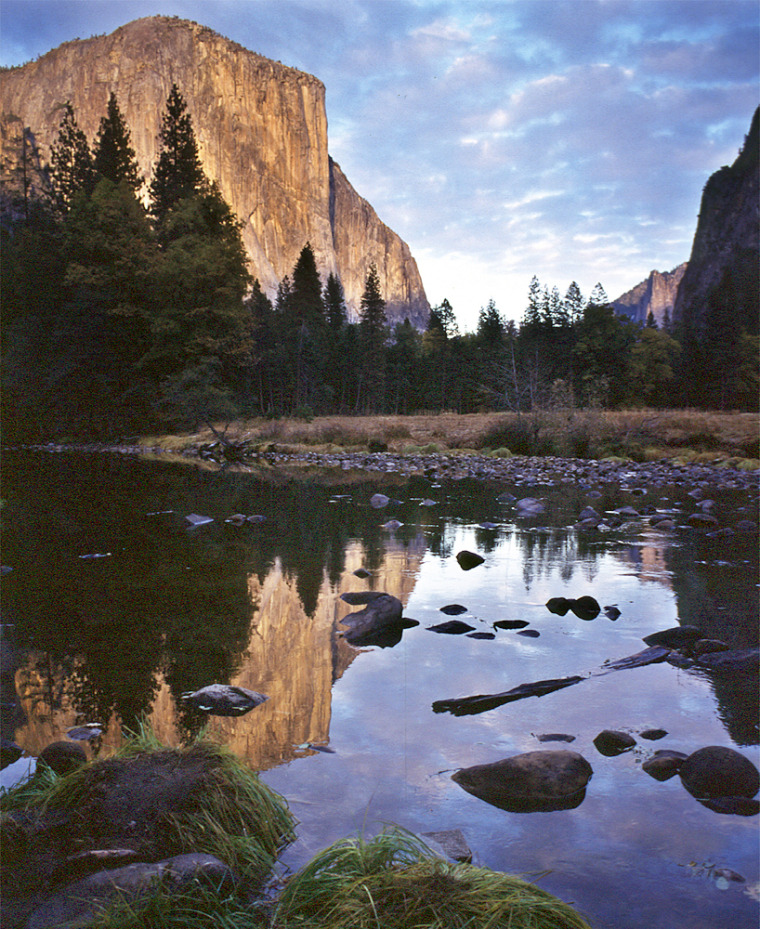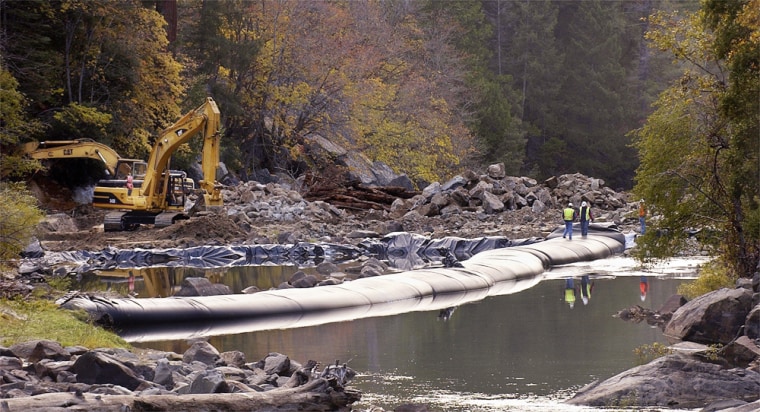The hum of chain saws and clanking of steel on steel have replaced the buzz of summer crowds as officials push forward the largest effort to transform Yosemite National Park since its inception in 1890.
The $441 million Yosemite Valley Plan aims to “reduce the human footprint,” pruning parking spaces, moving campsites and roads, rebuilding housing destroyed by a 1997 flood and improving a shuttle bus system, among many other things.
But what some see as a back-to-nature scheme has drawn critics.
“The thrust and the balance of the plan is development and the singular intent is more development,” said Greg Adair, co-director of Friends of Yosemite Valley.
“It will also cost visitors their freedom,” Adair added.
'More visitor friendly'
Yosemite National Park Superintendent Michael Tollefson calls it a restoration project.
“Some do tend to look at it as new development but in reality what we’re doing is taking facilities that often look very tired and making them more user and visitor friendly, but at the same time providing better protection of the resources,” Tollefson said.
Protective wooden walkways are being installed over wetland meadows, buildings are being moved from the flood plain and an 85-year-old dam that once provided electricity for valley homes is being demolished, allowing 81 miles of the scenic Merced River to flow freely through the park.
Visitorship to the park is increasing, with Yosemite now seeing 3.5 million visitors annually. Thirty years ago, 80 percent of Yosemite’s visitors were overnighters; now, it’s 80 percent day-use.

Vehicle traffic has increased about 30 percent over the last decade. Seven bears were killed by cars on park roads in 2003.
Outside development is encroaching on park boundaries, bringing new housing projects and commercial construction — and thousands more people.
The newly opened Chukchansi Casino, one of the state’s largest, is just 30 miles down the road. SilverTip Resort Village, a 47-acre commercial and residential complex, was recently approved for the tiny park border town of Fish Camp.
Writers, artists and photographers spread the fame of Yosemite during the early to mid 1800s, setting off a steady increase of visitors and ultimately, drastic changes to nature’s landscape.
Yosemite was made a national park in 1890, and since then it has struggled to find a balance between preservation and public access.
Conservationists disagree
The Yosemite Valley Plan will bring just that compromise, supporters say.
“The plan strikes an elegant balance between visitor needs and protecting wildlife and natural habitat in the valley,” said Diane Boyd of the National Parks Conservation Association’s Pacific West regional office.

Adair disagreed, calling it the urbanization of a natural wonder which will limit visitor freedom.
“There’s upward of 70 archaeological sites destroyed or impaired in the Yosemite Valley under the plan,” he said.
Adair also says the plan will bring pricier hotel rooms and fewer affordable campsites.
“What if I told you that 20 years from now, nobody who wasn’t a white collar professional would be able to afford to stay in Yosemite Valley,” Adair said. “It’s an elitist plan.”
History of lawsuits
Six lawsuits have been filed against the park since the Yosemite Valley Plan was unveiled by then-Interior Secretary Bruce Babbitt in 2000.
“I’ve come to understand you’re a cantankerous, eccentric, passionate, irrational, idealistic, quarrelsome, impossible crowd of people,” Babbitt said at the time.
Park ranger Scott Gediman sounds like a modern day urban planner when he describes the future of Yosemite Valley.
“The ultimate goal is to have somebody drive into the valley and park their car and leave it and get around by walking, bicycling or shuttle bus,” Gediman said.
Sweeping his hand across an asphalt parking lot at the base of Lower Yosemite Fall, a site that attracts at least a million visitors a year, Gediman summed up much of his vision of the plan’s goal with one sentence: “This will all just be converted back to nature.”
